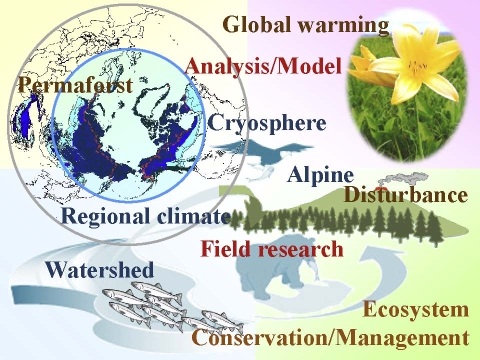- April 13: guidance
- April 20: paper review
- Li shixue: Fung IY, Chiang JCH. 2022. East Asian rainbands and associated circulation over the Tibetan Plateau region. Journal of Climate. doi: 10.1175/jcli-d-21-0569.1
- Dai bingguo: Ding C, Jiang X, Brosse S. 2017. Seventy-five years of biodiversity decline of fish assemblages in Chinese isolated plateau lakes: widespread introductions and extirpations of narrow endemics lead to regional loss of dissimilarity. Diversity and Distribution 23: 171-184. doi: 10.1111/ddi.12507
- May 11: Paper review
- Nabila Irtifa Alam: Hu L, Li W, Xu B. 2018. The role of remote sensing on studying mangrove forest extent change. International journal of remote sensing 39: 1–23. doi: 10.1080/01431161.2018.1455239
- Janine Tolod: Arias-Real R, Margarita Menéndez, Abril M, Oliva F, Muñoz I. 2018. Quality and quantity of leaf litter: Both are important for feeding preferences and growth of an aquatic shredder. PloSOne 13, e0208272. doi: 10.1371/journal.pone.0208272
- May 25: Paper review
- Mc Jervis Villaruel: Fernandez S, Rodriguez-Martinez S, Martinez JL, Garcia-Vasquez E, Ardura A. 2019. How can eDNA contribute in riverine macroinvertebrate assessment? A metabarcoding approach in the Nalón River (Asturias, Northern Spain). Environmental DNA 1: 385–401. doi. 10.1002/edn3.40
- Wu junyi: Gleason JE, Elbrecht V, Braukmann TWA, Hanner RH, Cottenie K. 2020. Assessment of stream macroinvertebrate communities with eDNA is not congruent with tissue-based metabarcoding. Molecular Ecology 30: 3239-3251. doi. 10.1111/mec.15597
- June 8: Paper review
- Zhou Xiling: Wu B, Li Z, Francis JA, Ding S. 2022. A recent weakening of winter temperature association between Arctic and Asia. Environmental Research Letters 17, 034030. doi: 10.1088/1748-9326/ac4b51
- Kosuke Nagahiro: Imada Y, Kawase H, Watanabe M, Arai M, Shiogama H, Takayabu I. 2020. Advanced risk-based event attribution for heavy regional rainfall events. Journal: npj Climate and Atmospheric Science 3, 37: doi: 10.1038/s41612-020-00141-y
- June 22: Paper review
- Yao Shuyu: Ma H, Zhang H, Deng J, Zhao H, Kong F, Jiang W, Zhang H, Dong X, Wang Q. 2022. Detection the eDNA of Batrachuperus taibaiensis from the Zhouzhi Heihe River Using a nested PCR method and DNA barcoding. Animals 12, 1105. doi: 10.3390/ani12091105
- Takehiro Morioka: Nakamura S, Kusaka H, Sato R, Sato T. 2022. Heatstroke risk projection in Japan under current and near future climates. Journal of the Meteorological Society of Japan (early view, 2022-030). doi: 10.2151/jmsj.2022-030
- Gao Haizhou: Mortágua A, Vasselon V, Oliveira R, Elias C, Chardon C, Bouchez A, Rimet R, Feio MJ, Almeida SFP. 2019. Applicability of DNA metabarcoding approach in the bioassessment of Portuguese rivers using diatoms. Ecological Indicators 106, 105470. doi: 10.1016/j.ecolind.2019.105470
- July 6: Paper review
- Tatsuro Kotsuji: Iizumi T, Uno F, Nishimori M. 2012. Climate downscaling as a source of uncertainty in projecting local climate change impacts. Journal of the Meteorological Society of Japan 90B: 83-90
- 岡崎紘也: Wacker S, Fossoy F, Larsen BM, Brandsegg H, Sivertsgard R, Karlsson S. 2018. Downstream transport and seasonal variation in freshwater pearl mussel (Margaritifera margaritifera) eDNA concentration. Environmental DNA 1: 64–73
- 長田幸子: Van Doren BM, Horton KG, Dokter AM, Klinck H, Elbin SB, Famsworth A. Proceedings of the National Academy of Sciences of the United States of America 114: 11175-11180
- July 20: Paper review
- 清水孟彦 (Takehiko Shimizu):
Wang X, Chen Y, Melville DS, Choi CY, Tan K, Liu J, Li J, Zhang S, Ma Z. 2022. Impacts of habitat loss on migratory shorebird populations and communities at stopover sites in the Yellow Sea. Biological Conservation, 269, doi: 10.1016/j.biocon.2022.109547
- Song Guanyu: Qiuhong T, Xuejun Z, Jennifer AF. 2014. Extreme summer weather in northern mid-latitudes linked to a vanishing cryosphere. Nature Climate Change 4: 45-50. doi: 10.1038/NCLIMATE2065
- 今川知美 (Imagawa Satomi): Dan MT, Boglárka MK, Alexandra T, Roland S. 2022. Identifying CO2 seeps in a long-dormant volcanic area using uncrewed aerial vehicle-based infrared thermometry: a qualitative study. Sensors 22, doi: 10.3390/ s22072719
|
- October 12: Research progress
- Li Shixue: Influence of Indian monsoonal heating on East Asian rainfall in early summer
- Dai Bingguo: Diversity of native fishes inhabiting lentic waterbodies in Japan
- October 26: Research progress
- Nabila Irtifa Alam: Effects of disturbances on coastal forest ecosystem services
- Janine Tolod: Influence of temperature variation in aquatic macroinvertebrates
- November 9: Research progress
- Mc Jervis Villaruel: eDNA metabarcoding as an alternative technique in studying hyporheic invertebrates
- Zhou Xiling: Interannual variability of the Warm Arctic-Cold Eurasia pattern modulated by Ural Blocking and North Atlantic Oscillation using a large ensemble experiment
- November 30: Research progress
- Wu Junyi: Assessing ecological responses of cold-water-adapted Sculpin (Cottus nozawae) to a thermal barrier manipulation in the Toyohira River
- Kosuke Nagahiro: Historical change in short heavy precipitation in Japan due to climate change
- December 14: Research progress
- Yao Shuyu: Development and validation of species-specific eDNA technology to detect and quantify hyporheic invertebrates in rivers
- Takehiro Morioka: Influence of the two-stage structure of Tibetan and Pacific high-pressure systems on the number of heat stroke patients in Japan
- January 4: Research progress
- Takehiko Shimizu: Understanding the impact of coastal environment changes on shorebirds population trends and community structures in Japan
- Gao Haizhou: Can eDNA in biofilms monitor changes in benthic fish distribution?
- January 18: Research progress
- Song Guanyu: Contribution of human activities on historical changes in snow cover in northern hemisphere
- Okazaki Koya: Assessing the impact of flow changes on endangered Margaritifera laevis
- Tatsuro Kotsuji: Temporal variation of relative humidity at leaf height in the potato farmland and its mechanism
- February 1: Research progress
- Bruna Ferreira Ramim: Study of the Okhotsk high pressure and its influence in Japan
- Sachiko Osada: Ground-based light pollution disrupts nocturnal flights in migrating birds
- Piya Mandal: Assessing the impacts of disturbances on ecosystem structures in Northern Japan
|
